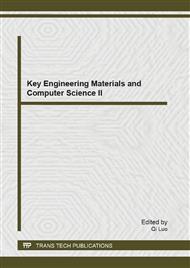p.3
p.9
p.15
p.21
p.27
p.33
p.37
p.44
Effects of Process Parameters on Material Removal Rate and Arithmetic Surface Roughness in Rubber Carbon Black Cutting by EDM
Abstract:
This research proposes a new application of Electrical Discharge Machine (EDM) for cutting the rubber carbon black. The new material of this study was a natural rubber mixed with carbon black for increased electrical conductivity of natural rubber. was accomplished through the technique of design and analysis of experiment and statistical analysis. The 24 Full factorial design was selected to conduct the experiment to determine the optimal mixed rubber cutting process parameters. The study has been carried out on the influence of design factors of the concentrate amount of carbon black per hundred of natural rubber (PHR), the voltage across the gap between and electrode tool and workpieces (Volt), the value of the discharge current (Ampere), and the duration of time (On-time, μs) that current is allowed to flow per cycle over response variables arithmetic surface roughness and material removal rate. The experimental results have shown the value of the discharge current that significantly affect to the degree of material removal rate of rubber mixed with carbon black and the duration of time that significantly affect to the degree of arithmetic surface roughness.
Info:
Periodical:
Pages:
3-8
Citation:
Online since:
July 2013
Price:
Сopyright:
© 2013 Trans Tech Publications Ltd. All Rights Reserved
Share:
Citation:


